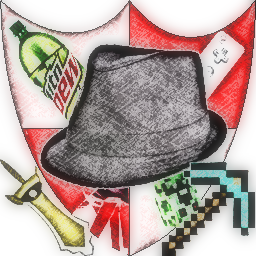The Basics of Genesys
Star System Epsylon uses the rules provided in Genesys for its gameplay. While it can get complicated, here are the basics:
The Dice
The dice used in Genesys are a little different than standard d20s. There are 6 types of dice: Ability (d), Proficiency (c), Boost (b), Difficulty (d), Challenge (c), and Setback (b). When making checks, the players must assemble their dice pool based on a variety of factors (described below), and roll them to see what they land on. Instead of numbers, however, dice in Genesys generate success marks (s), critical success marks (t), advantage marks (a), failure marks (f), critical failure marks (d), and threat marks (h). Each type of mark cancels out one mark of a similar type, so s cancel out f, t cancel out d, and a cancel out h, and vice versa.
Ability Dice (d)
These 8-sided dice are directly derived from a character's stats and skills. When making a skill check, compare the ranks a character has in a skill, and the stat that skill is derived from. Use the higher number as the total d in your dice pool. For example, if you are making a skill check using Athletics, compare the ranks a character has in Athletics and their Brawn stat. So, if a character has 4 ranks in Athletics and 2 Brawn, you roll 4 d. Ability dice contain s and a.
Proficiency Dice (c)
These dice are derived from a character's stats and skills. When assembling a dice pool, compare the ranks character has in a skill, and the stat that skill is derived from. The lower number is the number of d you upgrade into c. From the previous example above, if a character has 4 ranks in Athletics and a Brawn stat of 2, replace 2 d with 2 c. These are the only dice that contain t, but they also contain a greater chance of receiving s and a.
Boost Dice (b)
These six-sided dice appear when certain benefits are bestowed upon a character, whether they be an assist from another character, a character's abilities, or certain favorable conditions. They contain s and a.
Difficulty Dice (d)
These dice are used to determine the difficulty of a check. The difficulties of checks, which are dependent on how many d must be rolled, are:
- Simple (-)
- Easy (d)
- Average (dd)
- Hard (ddd)
- Daunting (dddd)
- Formidable (ddddd)
Challenge Dice (c)
These dice appear to represent a particularly difficult task, or when attempting an opposed check. While these are generally added at the gm's descretion, they can appear as the result of certain abilities. They are the only dice that contain d, in addition to f and h.
Setback Dice (b)
These dice appear to represent a setback or disadvantage caused by things like rough terrain, inferior tools, or a rock concert next door distracting you, but they can also be added by certain abilities. They contain f and h.
Types of Checks
There are a few types of checks that will need to be resolved in order to determine the success or failure of a task, such as hacking a computer, casting a magic spell, or attacking in combat. These skill checks are as follows:Skill Check
When making a skill check, first, the gm determines how difficult the task would be without any modifiers. Then, they add b or upgrade d into c accordingly. Then, they look at the character's skill and the stat it's derived from. The higher number is the total number of d, and the lower number is how many d into . In order to succeed, the check must generate at least one s. a and h do not affect the outcome, but can provide different side effects, both negative and positive. It is possible to have a successful check generate h, and a failed check can generate a.
Opposed Check
When attempting to use a skill on another character, such as Deception, the other character will oppose it, building an opposing dice pool in the same way the acting characters makes their dice pool, using d and c in place of d and c, respectively. This opposed pool is built in the same way as the characters build a standard dice pool, replacing the positive dice with their negative counterparts.
Competitive Check
When two characters compete against each other, such as in a contest, and they rely on the same skill, as in a car race or an arm-wrestling contest, they may perform a competitive check. The two characters assemble their dice pools as normal, and then compare the number of uncancelled s. The higher number wins. In the event of a tie, the higher number of t wins. In the event of a tie between t, the higher number of a wins. t also count as a higher version of s, so in a comparison between ss and st, the latter wins.
Assisted Check
When one character attempts to help another character with a task, they may perform an assisted skill check. There are two kinds of assisted skill checks: skilled assistance, which is when the assisting character has higher ranks in the skill needed for the task at hand or has a higher linked stat, and unskilled assistance, for when they do not. Skilled assistance allows the characters to choose which character's stat or skill are used for assembling the dice pool. Unskilled assistance merely adds b to the assisted character's skill check.
Combat
Combat in Genesys is turn-based, and follows this format:
- Determine Initiative: Each PC and NPC makes a Simple(-) Cool or Vigilance Check. Once the check is generated, the GM takes the results of each check and ranks them in order from highest number of s generated to lowest. If two PC checks are tied, the one with the higher number of a is ranked higher. If a PC is tied with and NPC, the PC is ranked higher. This is the initiative order.
- Assign Initiative Slots: Once the initiative order is determined, the GM makes note of which places are PC rankings, and which are NPC rankings. These places then become PC and NPC initiative slots respectively.
- Taking Turns: Once the initiative slots are determined, turns proceed in the order of the slots. On a PC slot, the players agree which character shall act out of all the player characters who have not yet acted this round. There are three ways a character may spend their turn: an Incidental, which is a small action that takes little effort such as talking or switching weapons, a Maneuver, which is an action that needs a small amount of time investment, but not much, such as aiming a weapon or opening a door, and Actions, which are tasks that require a skill check to perform, such as hacking a computer, healing an ally or, most commonly, attacking a foe.
These can be performed in any order, but characters are limited to only two maneuvers and one action per turn. In addition, while the first maneuver is free, the second maneuver costs 2 strain to perform, unless the character has an ability that allows for it. - End of Round: When all the PCs and NPCs have taken their turns, the round ends. Any effects that last until "the end of the round" refresh at this point. If all the foes are defeated, move on to the next step. If not, repeat steps 3-4 until they are.
- End of Combat: When all the foes are defeated, the combat encounter ends. Any effects that last until "the end of the encounter" refresh at this point.
Defense
IDefense is a rating that determines how difficult it is to land a hit on a character. Each point of defense adds b to all combat checks made against them. No character can have a defense rating higher than 4.
There are three types of defense: general, melee, and ranged. Melee defense provides the above bonus only for melee attacks, such as with fists or a sword, ranged only provides it for ranged attacks, such as with a gun or thrown object, and general defense provides it for both types of attacks.
Defense ratings come from two sources: those that can stack, and those that can't. Think of the ones that can't stack as those that "provide" defense, and those that can as those that "increase" defense. Sources that provide defense have a number beside them, while those that increase defense have a "+" next to that number. If a character receives extra defense from more than one source that provides defense, choose the better option. If the total defense would be greater than four, it becomes four regardless.
Soak
Soak reduces incoming damage by an amount equal to it's rating. Most soak comes from a character's Brawn stat, although there are pieces of armor that can increase it. When the character would be damaged by any source, first calculate the total damage they would suffer, then reduce that number by the soak value. If the soak value is higher than the incoming damage, the attack does nothing.
Range Bands
Genesys uses range bands as broad terms to describe how far away something is from your relative position. There are five range bands: engaged, short, medium, long, and extreme, with tactical being reserved for vehicles.
- Engaged: This is used to describe two characters that are engaged in hand-to-hand combat, or that a character is close enough to an item to use it. This simple means that the two are able to interact with one another.
- Short: This is used to describe a distance of a few meters away. People who are a short range away from each other can talk comfortably without raising their voices, and most thrown weapons and small firearms are most accurate at this range.
- Medium: This is used to describe a distance of several dozen meters away. People in medium range of each other need to talk loudly to hear each other, and most reliable pistols can reach this far, while many thrown weapons cannot.
- Long: This is used to describe a distance of more than a few dozen meters away. People in long range of each other need to yell loudly in order to hear each other, and rifles and mounted weaponry can reach this distance without too much trouble.
- Extreme: This is used to describe the farthest distance two people can interact with each other, albeit through sniper rifles and a few vehicle mounts. They may not be able to hear each other even if they shout.
- Strategic: Usually only reserved for vehicular combat, strategic range is a distance so great that two people at this range can't even see each other with the naked eye. Vehicles can detect each other at this range, unless one of them is going out of their way to be stealthy. Most long-range guided missiles function at this range.
Remove these ads. Join the Worldbuilders Guild












This is incredibly detailed. No joke, I would have no idea as to where to start on such a project. I like the different dice and their results in correlation to different tasks and challenges. Where did you draw inspiration for this from? D&D? Warhammer? Also how did you get these images and put them into World Anvil? The images for the dice and the results, that is. Did you make them yourself?
The system is actually based on a thing called Genesys, a rulebook I picked up a few weeks back. World Anvil actually has some bbcode for it, provided you select "Genesys" as the system your world runs on. You can make d appear just by typing in genesysdice:ability in square brackets, and that makes it really easy to communicate difficulty and other related things.